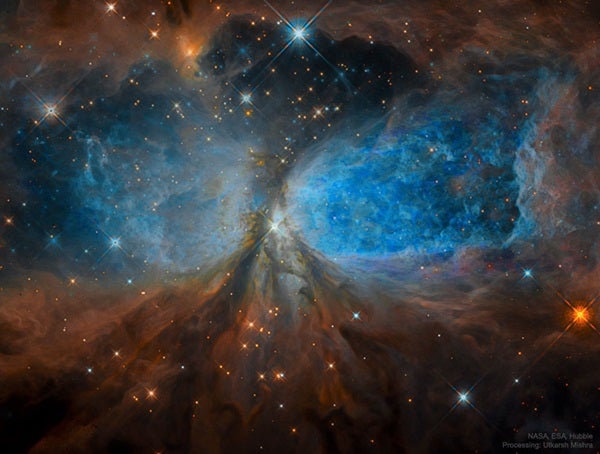Ever wonder what the world looks like from the International Space Station? Do you want to watch an astronaut speak from space? NASA TV is the perfect place to see both of these things and more. This free, 24-hour video service can be found on YouTube and on NASA’s website. Throughout the day, you can drop in to watch astronauts give talks on microgravity, NASA scientists explaining upcoming missions, and even catch a live launch if you tune in at the right time.
2. ESA videos and images
The European Space Agency (ESA) website is a lot like NASA’s in that it has plenty of engaging and educational videos to watch. Get a behind-the-scenes tour of their launch site in French Guiana, or listen in as experts discuss the plans and challenges of upcoming missions.
As one of the world’s leading space agencies, the ESA’s website is designed with public outreach in mind. In addition to hosting thousands of videos and tens of thousands of images, the ESA also livestreams its own channel called ESA Web TV.
3. The Hubble Space Telescope’s homepage
The most famous space telescope in history — a joint mission undertaken by NASA and the ESA — has its own website with loads of information on exoplanets, nebulae, stars, galaxies, and much more. You can sift through collections of thousands of photos, countless videos, and informative articles.
Hubblesite.org offers a lot of knowledge in one place. Whether you’re looking for quick facts on the telescope, its mission, or its science, or just the latest Hubble news, the telescope’s online portal has you covered. The site also has educational resources to help making teaching the next generation about Hubble’s mission and astronomy as a science both easy and fun!
4. Cosmos: Possible Worlds
In 1980, Carl Sagan mesmerized the world when he hosted a humbling, captivating, and, most of all, accessible television series called Cosmos: A Personal Voyage. This show — written by Sagan, Steven Soter, and Emmy and Peabody Award-winner Ann Druyan (who married Sagan in 1981) — thoughtfully explored the wonders of the universe, as well as our place in it. (By the way, if you haven’t heard Sagan’s famous Pale Blue Dot monologue, do yourself a favor and take a few minutes to listen to it.)
And earlier this month, 40 years after Sagan first brought the distant cosmos into our living rooms, the latest season of the show — Cosmos: Possible Worlds — premiered. To supplement your viewing experience, make sure to check out:
- Our photo gallery highlighting shots from the latest season of Cosmos
- Corey Powell’s interview with Druyan
- Corey Powell’s interview with deGrasse Tyson
Also make sure to watch the third season of Cosmos on the National Geographic Channel Monday nights at 8 p.m. EST.
5. Astronomy magazine
Finally, did you know we host a collection of videos right here at Astronomy.com? For example, “The Real Reality Show” will teach you about the history of astronomy and answer some of those burning questions you didn’t even know you were wondering about. Or you can browse our archive of hundreds of thought-provoking reader questions that have been answered by our editors and outside experts.
Astronomy.com also has plenty of tools, podcasts, videos, and guides on observing for those looking to use their downtime to explore the night sky in person. Just remember, if you manage to capture a great shot of the heavens, make sure to submit it to our Space & Beyond Box Photo Contest, which runs through April 23, 2020.
If you’re looking for short video snippets of popular news stories, Check out our Astro News Bytes series. And for those of you who are stuck in the house but don’t have time to watch anything, you can also tune in to past episodes of our podcast: 5 Questions with David J. Eicher.
Remember, the cosmos is never out of reach; it’s always out there, just waiting to be explored from the comfort of your own home!











